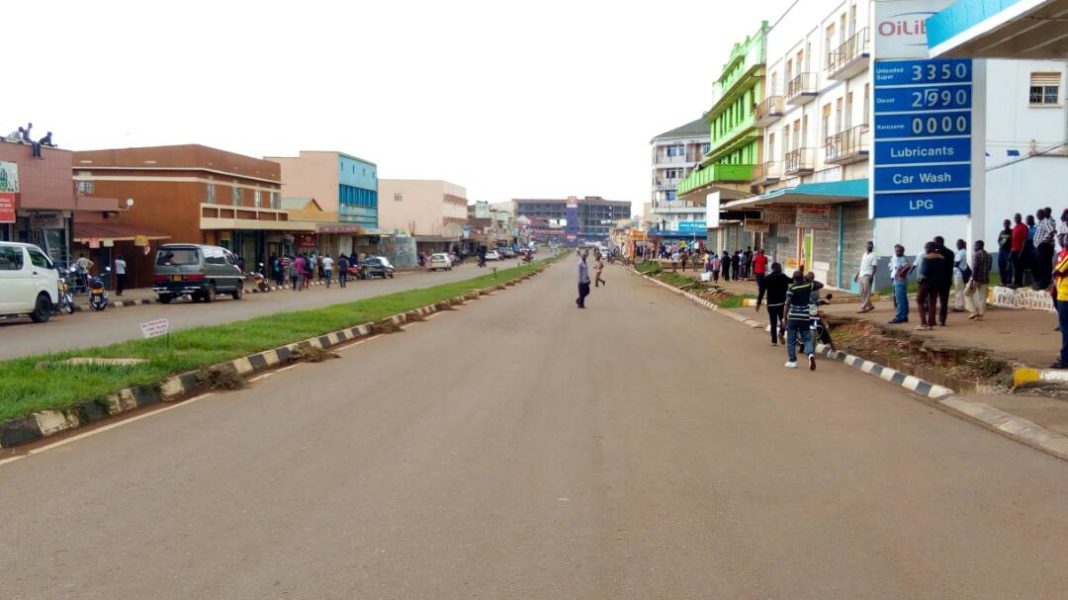The Support to Municipal Infrastructure Development (USMID) Program that was launched in August 2013 to improve urban municipalities in Uganda has led to the increases in the value of land, buildings as well as rental prices of properties in the adjacent areas of the constructed roads, a World Bank confidential document says of the municipalities sampled.
The first phase of the US $160 million USMID Program targeted 14 municipalities, namely: Arua, Gulu, Lira, Mbale, Soroti, Tororo, Jinja, Entebbe, Masaka, Mbarara, Kabale, Fort Portal, Hoima, and Moroto.
Particularly the value of land increased from 50-60 per cent, 50-100 per cent, 30-50 per cent, 0-20 per cent and 20-40 per cent in Fort Portal, Hoima, Gulu, Mbale and Masaka respectively. In the same municipalities sampled, rent increased from 40-60 per cent, 80-100 per cent, 20-30 per cent, 0-30, per cent and 20-30 per cent respectively.
However, it notes that the sharp increases in Hoima municipality, in both rent and land values can also be attributed to speculations about oil extraction impact on the local economy.
“The town is now beautiful. Storied buildings are coming up. Land prices and rent prices have gone up.
There is no more dust,” the document quotes a property broker in Hoima Municipality.
Employment Creation
The document says that the construction of urban roads created direct and indirect jobs in the municipalities sampled. However, the document says most of the urban road infrastructure projects visited had been completed or partially completed. “It was only Nyakana Road in Fort Portal where construction was still ongoing and therefore data on employment was obtained,” it says.
According to the document written in April, 2018, the construction of Nyakana road in Fort Portal with a length of 0.94km, was directly employing 56 workers out of which, 10 percent were highly skilled, 10 percent were skilled and 80 percent unskilled.
“The highly skilled workers, skilled workers and unskilled workers were earning Shs35, 000, Shs25, 000 and Shs12, 000 per day respectively. The construction of the road was also indirectly employing approximately 70 workers,” it says. The construction of the road was expected to last for one year and three months.
The documents says that using available data, the construction of one kilometer of the road in a municipality creates direct employment for an estimated 60 workers at a weighted average daily wage rate of Shs13,100 for 15 months.
Construction of one kilometer of an urban road also creates indirect employment for 74 workers who supply goods and services and also through increased consumption from workers who are employed directly, thus, for each direct job created during construction of an urban road, 1.2 jobs are created which it says it is consistent with estimates from previous studies.
“It can also be estimated that the total wage bill for 60 workers, working for 65 weeks and working 5 days per week is estimated at Shs 255,450,000 or 5 per cent of the total cost of one kilometer of a road,” it says.
Road works project has created a positive impact in lives of the Gulu residents in terms of employment especially among youth. Since 2014, at least 854 youth have been employed as truck drivers, machine operators, mechanics, builders and manual laborers on the multi-billion shilling road works project,” the documented quotes Francis Barabanawe Gulu Municipality Town Clerk.
The existing USMID Program was approved on March 20, 2013, became effective on August 20, 2013 and will close in December 31, 2018.
Meanwhile government has requested for an US $335 (about Sh1.240 billion) from the World Bank under USMID to improve the road infrastructure in the municipalities of Kamuli Kitgum, Kasese and Mubende.
After one year of implementation and through targeted institutional support from the Ministry of Lands Housing and Urban Development, four additional municipalities that are regionally distributed shall be added to the program.
“The remaining municipalities in the country will be supported through the central government component to have the necessary capacity to meet the Program minimum conditions and be able to join the Program in the subsequent phase,” says the confidential document.




